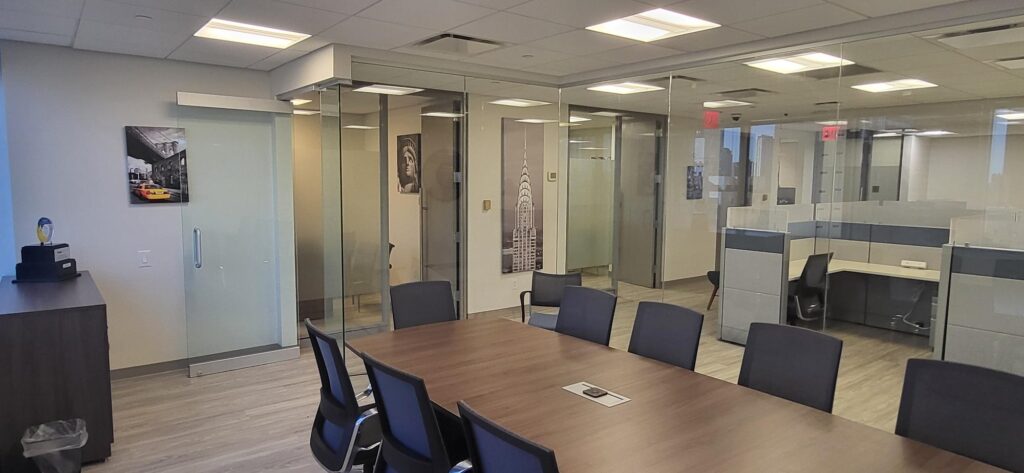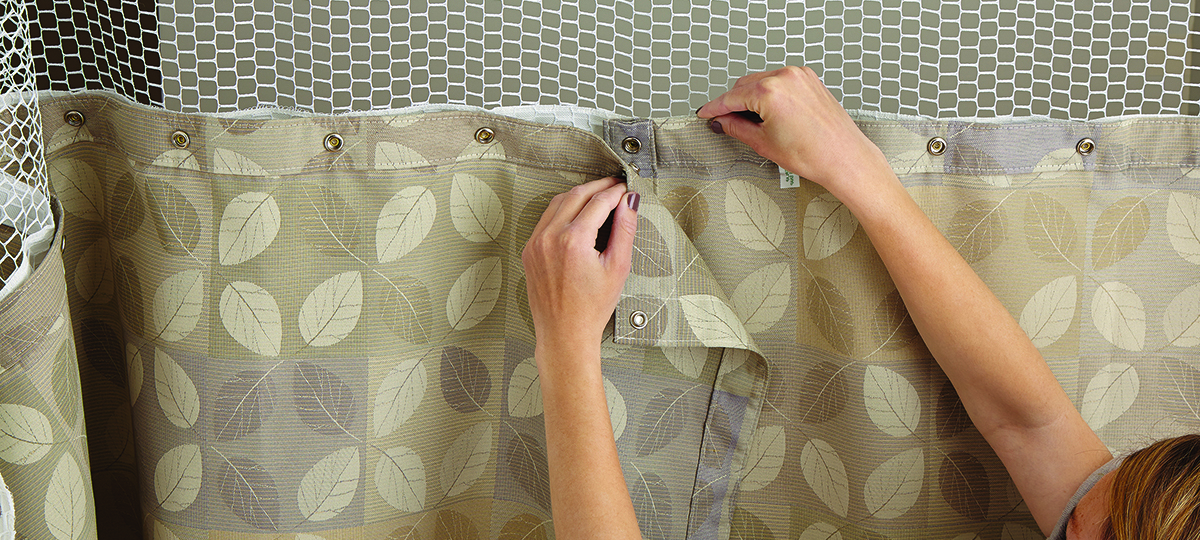Hospitals and healthcare facilities are often bustling environments where patient care and safety are top priorities. However, behind the scenes, there are many elements to consider regarding infection prevention—one frequently overlooked: healthcare curtains. These curtains are essential in maintaining patient privacy but also become a breeding ground for harmful bacteria if not properly managed.
According to the Centers for Disease Control and Prevention (CDC), approximately 1 in 25 U.S. hospital patients will contract at least one healthcare-associated infection (HAI)1, leading to significant healthcare costs. It’s alarming to note that studies have found up to 40% of HAIs can be traced back to the contamination of healthcare workers’ hands2, and curtains are one of the most common sources of infection. Keeping hospital privacy curtains clean, sanitized, and compliant with health and safety standards is crucial.
The Challenge of Cubicle Curtain Cleaning in Healthcare Facilities
Hospital curtains and cubicle drapes are often exposed to pathogens, bodily fluids, and other contaminants, which makes regular cleaning essential. However, manually changing and laundering medical curtains can be time-consuming and labor-intensive. In addition, improper cleaning can lead to the spread of harmful bacteria, risking the health of both patients and staff.
How can hospitals manage the delicate balance of safety, time, and budget while ensuring their privacy curtains are cleaned to the highest standards?
The Right Program
When choosing a Healthcare Cubicle Curtain Cleaning Program, working with a medical-focused laundry provider who is an infection prevention leader is critical. The provider should offer a streamlined solution that improves safety and reduces labor costs. Below are key considerations when selecting the right curtain program.
Getting Started
- Curtain Design: Select colors and styles that match the hospital or facility’s brand and patient needs.
- Installation: Choose a program partner that will measure, order, and install the new medical curtains, along with removing existing curtains, making the process seamless.
Ongoing Management
- Laundering and Inspection: Curtains should be cleaned, sanitized, and inspected to adhere to the highest infection prevention standards. The safety of patients is paramount, and that’s why your provider’s laundering process must go beyond standard requirements. Cleaning procedures should meet or exceed OSHA, CDC, and HLAC standards and comply with The Joint Commission linen laundry requirements.
- Regular Curtain Replacements: A set schedule for changing curtains ensures that curtains are always consistently clean.
- Documentation of Curtain Changes: The right provider should document each curtain replacement, keeping track of the schedule and providing proof of infection prevention compliance.
- Inventory Management and Costs: Work with a provider who will manage curtain inventory to the correct number of curtains, including spares for isolation cases. Purchasing new surgical curtains can be expensive, often requiring capital budget approval. However, with a fully managed cubicle curtain cleaning program, there’s no need to buy curtains, eliminating the need for capital expenditure and upfront costs.
Keeping the Facility Safe, Efficient, and Compliant
A Healthcare Cubicle Curtain Cleaning Program provides a cleaner and safer environment for patients and staff and frees up valuable time and resources. Be sure to partner with a provider that guarantees privacy curtains are professionally handled and laundered to the highest infection prevention standards.
Get started today and take the first step towards improving patient safety and streamlining curtain management.
1CDC Healthcare-Associated Infections Web Page
2 Weber, D.J., Anderson, D., Rutala, W.A. (2013) The Role of the Surface Environment in Healthcare-Associated Infections. Current Opinion in Infectious Diseases, 26(4). 338-344.

